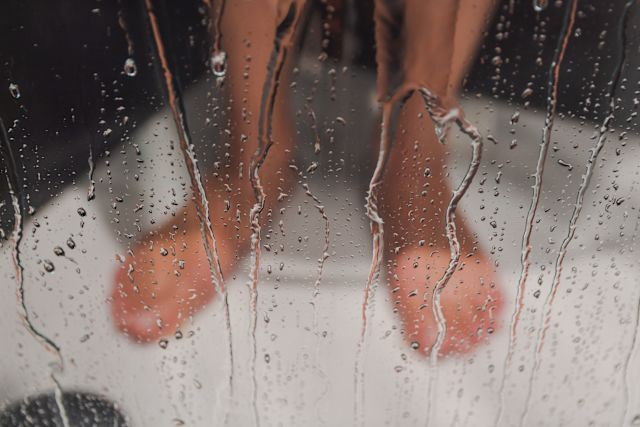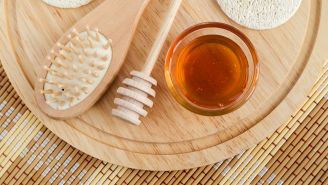Updated on March 18, 2024.
It's something many people have wondered for years. You may have even asked the question yourself: Do you need to wash your legs in shower?
To settle the argument—and to learn the best way to take care of your skin while showering— we turned to Vinod Nambudiri, MD, a dermatologist at Grand Strand Regional Medical Center in Myrtle Beach, South Carolina.
Why bathing is important
First thing's first: Bathing should be a regular part of almost everyone’s normal routine, and it’s likely you know why. But as a reminder, regular bathing helps to remove sweat, dirt, and dead skin cells while preventing body odor. If you don’t bathe, sweat can mix together with germs that in some cases make their way inside the body through cuts and scrapes, causing more serious problems like infections.
So should you wash your legs?
People who defend not washing their legs often argue that soap and water tend to drip when cleaning other parts of the body, so focusing on those lower limbs is not necessary.
While it is true that soap and water trickle down, “I do recommend deliberately rinsing the legs with water,” says Dr. Nambudiri. Plus, if you’re in the shower or bath already, it’s the logical thing to do. But unless they are visibly dirty, you probably don't need to wash your legs as thoroughly as other areas like your underarms or groin.
If you plan on shaving your legs, meanwhile, it may be a good idea to prime them beforehand. Rinsing them is a great way to do it.
“Make sure your legs are wet before you begin shaving,” says Nambudiri, "so your hair and skin will be softer, which will help wash away dead skin and oils that accumulate on the skin surface.” A good rule of thumb is to shave your legs at the end of the shower.
Bottom line? While you may not need to spend a lot of time cleansing your legs, it’s a good idea to rinse them off each time you take a shower or bathe.
Bathing tips everyone should know
Now that you understand leg-washing best practice, you may be curious about the rest of your body. Bathing is a very individualized process, since everyone’s skin is different, and some may have conditions that require special treatment or products.
How often you need to shower also varies from person to person. If you’re sweating more or your body is dirty, it’s likely you’ll need to shower more often. However, there are some general tips that most of us can follow:
Start at the top
When bathing and showering, you should consider starting at the top of your body, then working your way down. “Shampoo and condition your hair first, since some of those products can linger on your skin if you save them until the end,” says Nambudiri. “Lingering products can promote things like acne or skin irritation, especially on the face.”
Then, move on to cleansing your face, followed by the upper body, lower body, and then feet. This will ensure the products you’re using are properly washed away.
Pay special attention to the dirtiest spots
When you’re bathing, it’s especially important to focus on the areas of your body that tend to be the dirtiest. “The areas that have a greater number of sweat glands should certainly be cleaned every day,” says Nambudiri.
The most common culprits are the groin regions, under the breasts, armpits, the underbelly area, or any other place where skin folds overlap upon each other. The crevices of the elbows and backs of the knees and feet also tend to have sweat buildup.
Cool it down
Although it can be tempting to make the water temperature hot, doing so can dry out your skin. “Hot water actually washes away more of the natural oils, which our bodies produce to hydrate our skin,” says Nambudiri. Stick to warm water when you’re bathing, and don’t stay in any longer than needed.
Choose a mild cleanser
“If you’re choosing between a soap and a cleanser, cleansers are usually mild and less harsh, and probably won’t strip away the oils of the skin,” says Nambudiri. This is because they’re less likely to contain the ingredient sodium lauryl sulfate, which is a common skin irritant.
Cleansers typically work whether you have oily or dry skin, but it can be helpful to pick one suited to your skin type. If your skin tends to itch or dry out, try choosing a product with a moisturizing component to it, for example. “A moisturizer can counteract any of the drying that comes with cleansing the skin,” Nambudiri explains. Applying moisturizer later can help, too.
Don’t over-exfoliate
Exfoliation, the process of removing dead skin cells from the surface of your skin, can be tricky. If done correctly, exfoliation can lead to brighter, more youthful looking skin. But overdoing it can have the opposite effect, causing the skin to become discolored and irritated.
“If you use anything that’s like a scrub, you want to be somewhat gentle,” says Nambudiri. “There’s a fine line between exfoliation, which is turning over dead skin cells, and excoriation, which is actually stripping off the healthy skin cells that are on the top layer of the skin.”
Instead of exfoliating every day, opt for just a few times a week on areas like your face. Men should focus on hair-bearing areas like the chest or back, since they tend to have more dead skin cells. It’s best to apply the product in a small, circular motion until the beads or grittiness dissolves, but don’t rub the area for longer than 30 seconds. Rinse with lukewarm water when you’re done. Never exfoliate if you have any sort of open cut or wound, or if your skin is sunburned.
The type of exfoliation and how often you need to do it will all depend on your skin type, so talk with your healthcare provider to learn what’s best for you.
Pat dry and moisturize post-shower
Nambudiri suggests gently patting skin dry post-shower, since rubbing can cause irritation. Then, make a habit of moisturizing the skin 2 to 3 minutes after showering, when your skin is still moist.
So, the next time you hop in the shower, practice these healthy skin habits that are sure to keep your body clean, head to toe—legs included.







